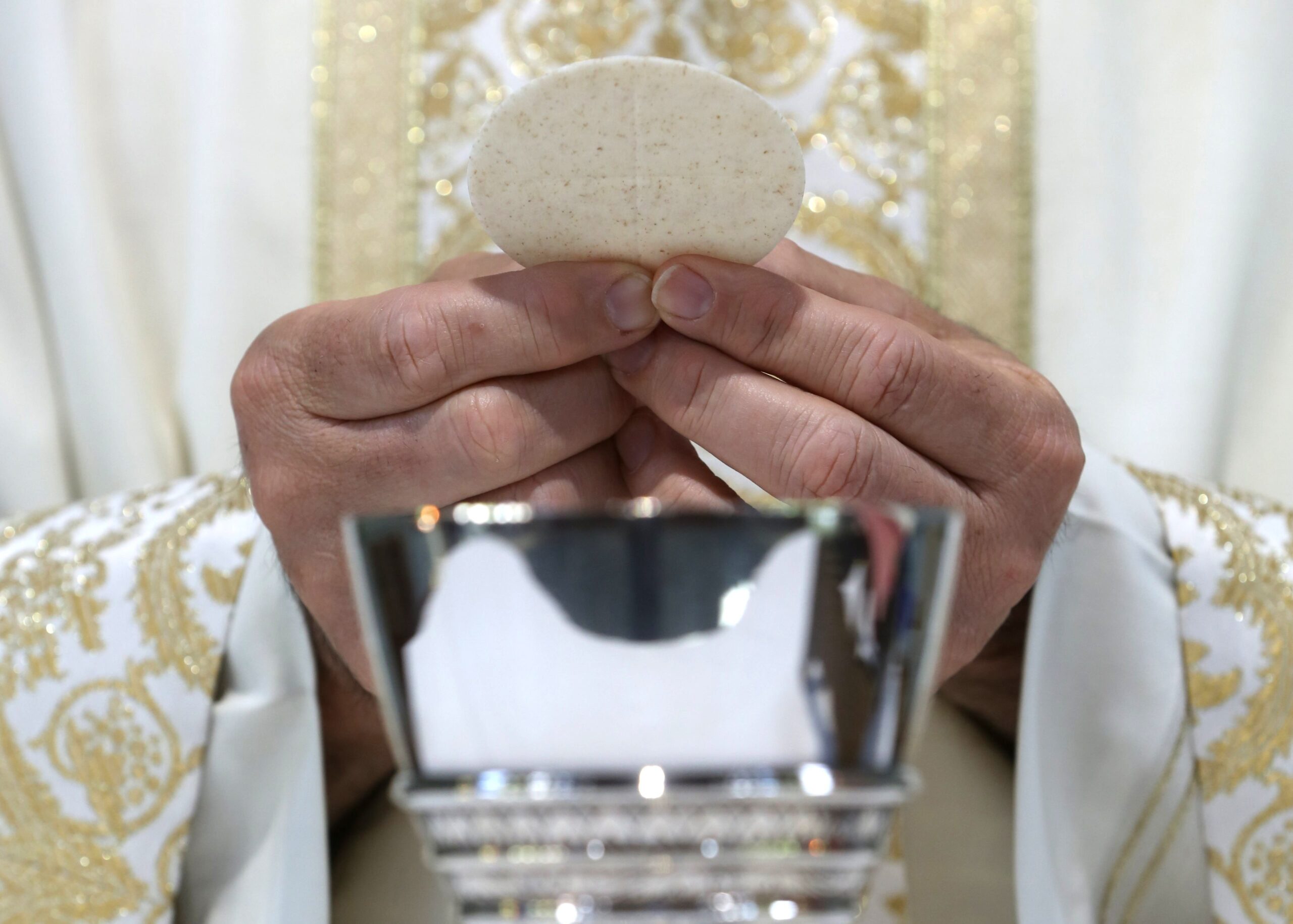During his workshop at the Los Angeles Religious Education Congress, Father Dave answered questions of faith from those in attendance regarding the Mass. Many of those questions centered on our beliefs surrounding the Eucharist, and Cindy asks, “How do we simplify the explanation of transubstantiation for the benefit of children?”
Father Dave notes that he’s not an expert in teaching children, but says, “I think we could stand to do this for all age groups. So this is a question that comes in all the time: Do we actually believe that what we are receiving at communion is really the flesh and blood of Jesus Christ himself? Short answer, yes. But there’s a lot of nuance in what we mean.”
“When we say transubstantiation, it’s not a transformation, and sometimes we’ll misuse that term,” Father Dave explains. “It’s a technical Greek philosophy term, the difference between the form and the substance. So the form is what we can see, measure and touch with all of our senses. The substance is, as Plato would say, just that ephemeral, non-corporeal stuff that is really the essence of something.” He elaborates that the substance of the bread and wine is what changes, not the form, excluding rare cases of Eucharistic miracles. “What we believe about transubstantiation does not require us to go to a scientific lab and have it be detected as the flesh of a first century person, because that is the form. That would be a transformation.”
WATCH: Sacraments 201: Eucharist (What We Believe)
Father Dave offers two analogies to help us understand how the substance of the bread is changed into the body of Christ. First, he describes seeing an old friend for the first time in many years, but not recognizing them because they lost a lot of weight. “Think of somebody that you haven’t seen in a long time, and you meet up with them. And let’s say like the example of my friend, they look very different, or their voice is very different, there’s something perceptible on the outside that’s very different,” he says. “But you engage this person in conversation, as I did with my friend, and it didn’t take me very long to realize this is the same guy, this is who I know. The most important thing about that person, the essence of that person had not changed.”
“Now think of the opposite,” Father Dave says. “Think of somebody that you see after 20 years, and they look exactly the same as they did in high school. But after a few minutes of talking to them, you hear that something has changed in their life. Maybe it was like a near death experience, or giving birth to a baby…and it’s not long in the conversation where you realize this is a very different person than the person that I knew 20 years ago. Fundamentally, this person has changed and it doesn’t seem like they’re going back. They look the same, their hair color is the same, they may weigh the same, but they are, at essence, totally different. That’s what transubstantiation is.”
RELATED: What’s the Difference Between the Catholic and Lutheran Belief in Communion?
Father Dave uses a second analogy for explaining transubstantiation. “An easier one that a friend of mine uses is the difference between going from being a man to being a father, or a woman to being a mother. You are fundamentally changed, you will never go back to that other person,” he says. The birth of a child irreversibly changes the mother and father, despite there being little to no physical transformation.
“That’s the kind of miraculous change that we’re talking about that happens during the Mass,” Father Dave says. “So when we ask questions about the true presence, do we really believe that? Honestly, I think a lot of the reason that surveys say people don’t believe in or understand the real presence is just a misunderstanding.”
